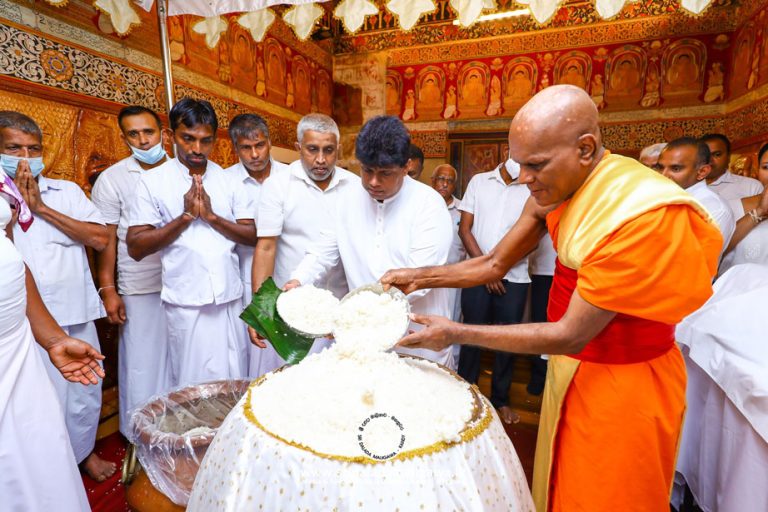Aluth Sahal Mangallaya: Honouring the First Harvest at the Sacred Temple of the Tooth Relic, Kandy – By Malsha – eLanka
Historical and Cultural Significance:
Rooted in ancient Sinhalese agrarian customs, this event dates back centuries and is closely linked with Buddhist traditions. It is believed that offering the first portion of the harvest to the Sacred Tooth Relic brings divine blessings to ensure agricultural abundance and national well-being.
The ritual also echoes the deep connection between the people, the land, the rulers, and Buddhism—a bond that has shaped Sri Lankan identity for generations.
The Ceremony at the Temple of the Tooth:
The Aluth Sahal Mangallaya in Kandy is conducted with great reverence and royal pageantry. The Diyawadana Nilame (chief custodian of the Temple) leads the offering of the first bundle of rice to the relic chamber of the Sacred Tooth. Traditional drummers, dancers, and temple officials in ceremonial attire add colour and sacred significance to the procession.
Representatives from different districts also bring rice to be blessed, symbolizing national unity and shared prosperity.
Image Source : sridaladamaligawa.lk
Rituals and Observances:
-
Blessing of the new rice: Priests chant blessings and offer the rice to the relic.
-
Distribution of blessed rice: A portion is later distributed among devotees and officials, believed to bring good fortune.
-
Participation of farmers and villagers: Farmers from across the country attend to show their devotion and seek blessings for future harvests.
Importance Today:
In modern Sri Lanka, the Aluth Sahal tradition remains a powerful reminder of the value of agriculture, the importance of sustainability, and the continued relevance of cultural heritage. As farming faces challenges from urbanization and climate change, such rituals reaffirm respect for nature and food security.
Conclusion:
The Aluth Sahal Mangallaya at Kandy is not just a ritual—it’s a celebration of gratitude, culture, and continuity. It unites the spiritual and the material, linking the sacred with the everyday toil of the farmer, reminding us of our shared duty to honour the earth and preserve tradition.






















